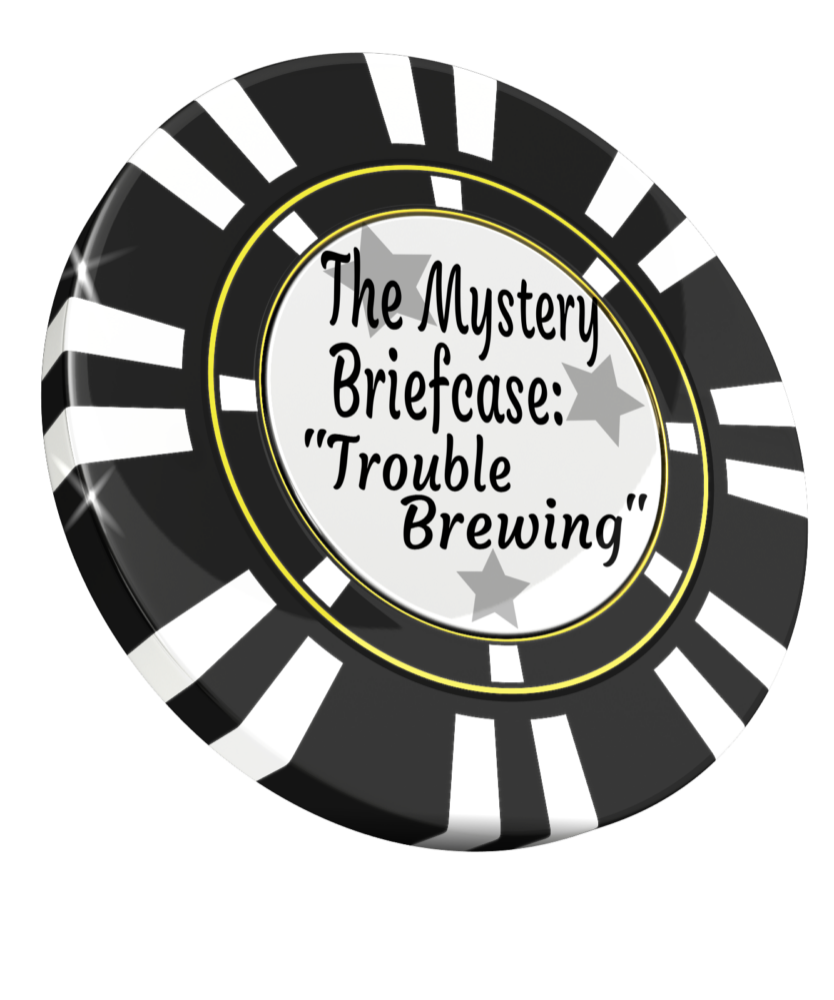The Ultimate Dynamic Learning Activity: "The Mystery Briefcase"?
Since November 2015 I've had this idea to bring the most engaging and memorable training experiences into the world of performance improvement and teamwork training, and this vision is finally being realized through "The Mystery Briefcase." The idea was spawned from the author’s love of escape rooms found now in most major cities across America and expanding quickly across the globe. This event brings that experience right into the classroom and allows the students a safe opportunity to test their teamwork and human performance proficiencies. This methodology stemmed from lessons learned in professional training atmospheres where things are more inclusive and engaging, resulting in training that sticks. A lot of what we talk about in performance improvement is conceptual and you have to figure out for yourself how to apply it. This opportunity gives students (players) the ability to USE techniques and see how they benefit (or during the conclusion, how they WOULD have benefitted) the situation.
Uses For This Training Method
This training can be used as an assessment tool, prior to, or after performance improvement training. It also can be used to discuss practitioner training uses and discover and explore communication habits. Is there a team in your organization you would like to see if they are up to the challenge? This is by no means, simple.
How Does It Work?

Cristen@HumanPerformanceTools.com
The “Mystery Briefcase” is designed specifically to challenge teams that are good at recognizing error likely situations and using good communication and human performance tools to solve puzzles and riddles while under immense time pressure. The difficulty will force the use of tools and reward players with solutions.
The activity uses teams of four to six participants per briefcase, and starts with a quick intro and the players trying to figure out how to open the case. Each one is coded a bit different, so teams cannot directly cheat off of other groups that may be in the room.
After the activity wraps up, the instructor will have an hour long conclusion session that will find out how students felt during the activity and how much using human performance tools, teamwork and good communication aided with the success of the solution. Performance based modes will be discussed, and the five principles of human performance. How students would perform a similar conceptual activity the next time will also be discussed to explain lessons learned.
How It All Started
The process started out with our team benchmarking escape rooms all over the US with a large list that includes: Chicago, Dallas, San Diego, Nashville, Fort Lauderdale, Atlanta, St. Louis, Indianapolis, and even in my hometown in Danielson, Connecticut. We learned about various mechanics and mechanisms that allow clues to feed into a bigger process and how game design and flow work. It took a lot of analysis to map out the design of a "room" that could be portable, light-weight, and still have the fun of the locks and the puzzles coming together to weave a storyline that made sense and was able to have players use teamwork and excellent communication to solve the problems. All of the rooms have similar traits and their own sense of style, uniqueness, and skill, pushing a threaded theme throughout the experience.
I started with a suitcase, but recognized afterwards, that it was super heavy, bulky, and only 4-8 players could use one at a time. What about bigger classes? Imagine lugging multiple suitcases around - so the practicality factor lost out. Fortunately, I landed on the perfect medium; the briefcase! It locks, can have multiple aesthetics, and can be combined with a handful more, so the entire class (4-6 players per brief case) can share in the engagement.
The Importance of a Great Theme

I actually started pretty grandiose with a soda recipe that would revolutionize soft drinks. After contacting Monster and Red Bull (Pepsi), neither were very interested in sponsoring the idea (but at least I tried). Around the same time I was working on the first theme idea, we were on a tour with a manufacturing industry supply chain management group called "APICS" at the "Foolproof Brewery" in Pawtucket, Rhode Island. I became fascinated with how beer is made in its various varieties and forms. "Trouble Brewing" is a true homage to the process and it allowed me to theme all of the individual games around beer. Is this still fun if you don't like beer or are underage? ABSOLUTELY! Is it even MORE fun if you LOVE beer, of course! There is a general rule across ALL escape rooms that NO previous knowledge of the theme is required to do well, and there is nothing to study for regarding game content. The game is mainly about solving problems and communicating well with your teammates, while trying to beat the clock and set a time record.
What's in the Briefcase?
Some of the things MB: Trouble Brewing players have in store:
Ransom notes, maps, hidden messages, 13 uniquely different locks, multiple puzzles, beer chips, Snap Circuits, UV Flashlight, menus, recipes, procedures... and players get treated to root beer barrel candies while they play!

As players solve tasks, they will assemble an actual simulated brewery using Snap Circuit parts. When they are put into the proper configuration each piece represents the actual components of a brewery! Players will be able to ask for a limited number of hints, but the clock is ticking!


Future for the Mystery Briefcase
Using the Mystery Briefcase medium, our team is currently assembling three more themes. "Egyptian Holiday" is about everything Egyptian with a little Indiana Jones thrown in. "Tempus Fugit" is about history and pop culture through recent decades. Finally, "Mangia Italiano" is about cooking with a restaurant overtone. Each will have unique purpose and Learning Objectives.
If you or you know someone whom would like to try it out, contact us directly: James@HumanPerformanceTools.com
